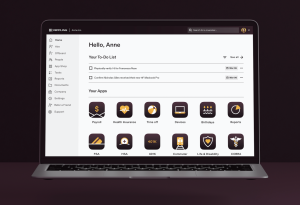appMobi’s New HTML5 SDK: A Cure to Audio, Animation Problems
![]() As an advocate of HTML5 development and open Web, appMobi released a new SDK and performance specs for its directCanvas technology, created to get rid of performance and capability obstructions that hinders the growth of HTML5 and open web. The SDK includes rendering acceleration, multiSound multichannel sound playback and directBox2D physics acceleration. It delivers 10x speed improvement in frame rate for HTML5 games.
As an advocate of HTML5 development and open Web, appMobi released a new SDK and performance specs for its directCanvas technology, created to get rid of performance and capability obstructions that hinders the growth of HTML5 and open web. The SDK includes rendering acceleration, multiSound multichannel sound playback and directBox2D physics acceleration. It delivers 10x speed improvement in frame rate for HTML5 games.
directCanvas for iOS was released as open source in November, and the new SDK will support it. directCanvas for Android will arrive in the first quarter of 2012, which will hasten the propagation of HTML5 games on Android devices such as Kindle Fire, Nook Tablet, Samsung Galaxy and HTC EVO 3D.
“We’ve switched all of our iOS games over to use appMobi’s technologies,” said Henrik Dalsgaard, CEO of TweenSoft, a leading HTML5 game developer. “directCanvas really does allow HTML5 games to perform like native games, even on older devices. The other advantage to us is that with HTML5 and appMobi, we can use the same code and build for iOS, Android and for the open mobile Web.”
In order to give off an illusion of smooth motion, animated games refresh the screen at least 25 times (frames) per second. appMobi ran comprehensive tests on an array of devices and OSes to characterize directCanvas’ acceleration on iOS-based devices. Results exceeded the company’s previous claim of 5x speed improvement, as it is actually 10x. However, with just the Safari WebKit browser and no directCanvas, none of Apple’s devices were able to deliver 25 frames per second.
![]() HTML5 wasn’t originally promoted as a game delivery platform, and its major limitation is that it can only play one sound at a time. With appMobi’s multiSound API, HTML5 game developers can play as many simultaneous sounds to their heart’s content and this is only hindered by the availability of memory.
HTML5 wasn’t originally promoted as a game delivery platform, and its major limitation is that it can only play one sound at a time. With appMobi’s multiSound API, HTML5 game developers can play as many simultaneous sounds to their heart’s content and this is only hindered by the availability of memory.
As for physics-based games which involve gravity and inertia, and performs collision detection, a JavaScript physics engine is needed, such as Box2D to calculate the factors. JavaScript is an interpreted language and not compiled language, so the extra interpretive processing slows frame rates, and reduces the number of possible entities in a game. What directBox2D does is speeds up these calculations by 2000 percent using a high performance, compiled physics engine.
The synergistic effect of these three technologies working together will be the pillar for HTML5-based games to deliver the smooth gaming experience common to native apps.
Mobile games love HTML5
HTML5 has been a boon for iOS, which differentiated itself from Android’s Flash capabilities before Adobe decided to shut Flash down. HTML5 mobile browser tests proved iOS to offer better performance, an important development as web-based games find ubiquity with HTML5-supported browsers.
HTML5 is gaining investor attention as well. Atlas Venture and consulting firm Bocoup decided to launch Game Lab, a new fund for companies building technologies that will push video game development with HTML5. It’s getting more popular by the day, and is evolving in tandem with the gaming industry in particular. This is an area that drives innovation for mobile users, and really gives HTML5 something to work towards.
A message from John Furrier, co-founder of SiliconANGLE:
Your vote of support is important to us and it helps us keep the content FREE.
One click below supports our mission to provide free, deep, and relevant content.
Join our community on YouTube
Join the community that includes more than 15,000 #CubeAlumni experts, including Amazon.com CEO Andy Jassy, Dell Technologies founder and CEO Michael Dell, Intel CEO Pat Gelsinger, and many more luminaries and experts.
THANK YOU













